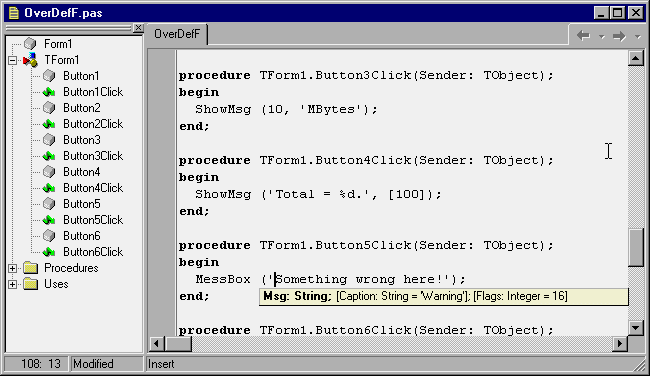Delphi Version Numbers
In Delphi you either maintain the version resource through the project options or you can include a custom RC or RES file with the version resource. I suppose Lazarus has similar capabilities. No information is available for this page.Learn why. Delphi XE2 - Application Version Info Hi, I have just recompiled a Delphi 2010 project to Delphi XE2. When I do a build of the project the build number is not incremented even though the project options settings are to 'include version information in project' and to 'auto generate build numbers'.

Delphi Basics: Integer and floating point numbers Integer and floating point numbers Documents Tutorials Numbers References Articles Author links Buy Website Traffic at Buy Proxies at Integer and floating point numbers The different number types in Delphi Delphi provides many different data types for storing numbers. Your choice depends on the data you want to handle. In general, smaller number capacities mean smaller variable sizes, and faster calculations. Ideally, you should use a type that comfortably copes with all possible values of the data it will store.
For example, a Byte type can comfortably hold the age of a person - no-one to date has lived as long as 255 years. With decimal numbers, the smaller capacity types also have less precision. Less numbers of significant digits.
The roots: Pascal and its history The origin of Pascal owes much of its design to Algol - the first high-level language with a readable, structured, and systematically defined syntax. In the late sixties (196X), several proposals for an evolutionary successor to Algol were developed. The most successful one was Pascal, defined by Prof. Niklaus Wirth. Wirth published the original definition of Pascal in 1971. It was implemented in 1973 with some modifications. Many of the features of Pascal came from earlier languages. Download shareit apk.
The, and value-result parameter passing came from Algol, and the records structures were similar to Cobol and PL 1. Besides cleaning up or leaving out some of Algol's more obscure features, Pascal added the capability to define new data types out of simpler existing ones. Pascal also supported dynamic data structures; i.e., data structures which can grow and shrink while a program is running. The language was designed to be a teaching tool for students of programming classes. Borland Pascal With the release (November 1983) of Turbo Pascal 1.0, Borland started its journey into the world of development environments and tools.
Hummel Synopsis: A bored housewife feels neglected by her physician husband so she starts spending her afternoons working at an exclusive brothel. Secret games 3 1994 movie. Unfortunately, she becomes the obsession of a handsome, but very unpleasant customer.
Inazuma eleven go games online. To create Turbo Pascal 1.0 Borland licensed the fast and inexpensive Pascal compiler core, written by Anders Hejlsberg. Turbo Pascal introduced an Integrated Development Environment (IDE) where you could edit the code, run the compiler, see the errors, and jump back to the lines containing those errors. Turbo Pascal compiler has been one of the best-selling series of compilers of all time, and made the language particularly popular on the PC platform. Why the name 'Delphi'? As explained in the Delphi Museum article, project codenamed Delphi hatched in mid 1993.
Delphi Compiler Defines
It was simple: 'If you want to talk to [the] Oracle, go to Delphi'. When it came time to pick a retail product name, after an article in Windows Tech Journal about a product that will change the life of programmers, the proposed (final) name was AppBuilder. Since Novell released its Visual AppBuilder, the guys at Borland needed to pick another name; it became a bit of a comedy: the harder people tried to dismiss 'Delphi' for the product name, the more it gained support. Once touted as the 'VB killer' Delphi has remained a cornerstone product for Borland.